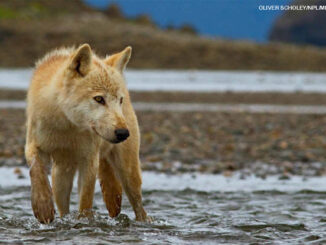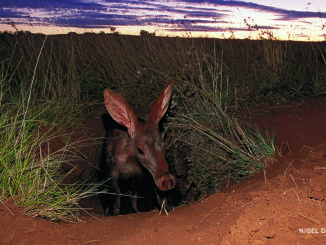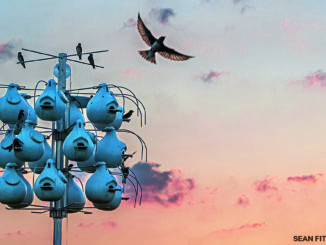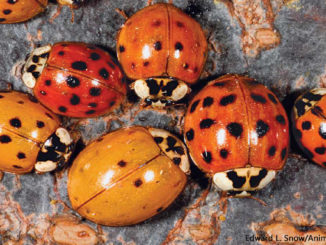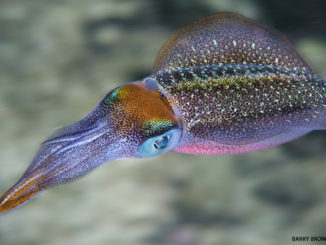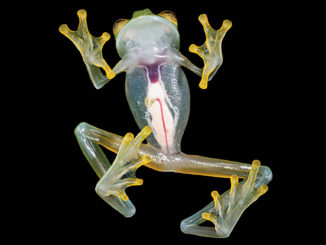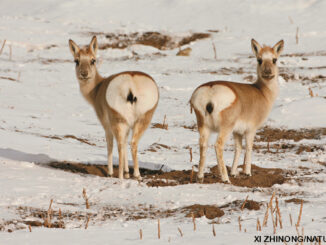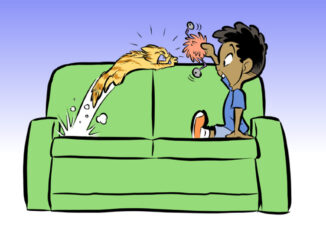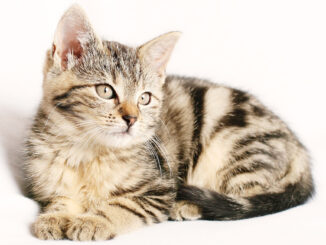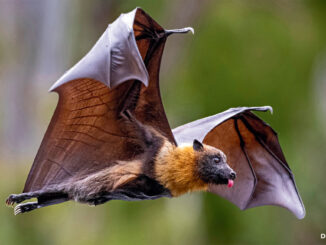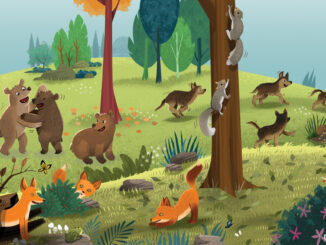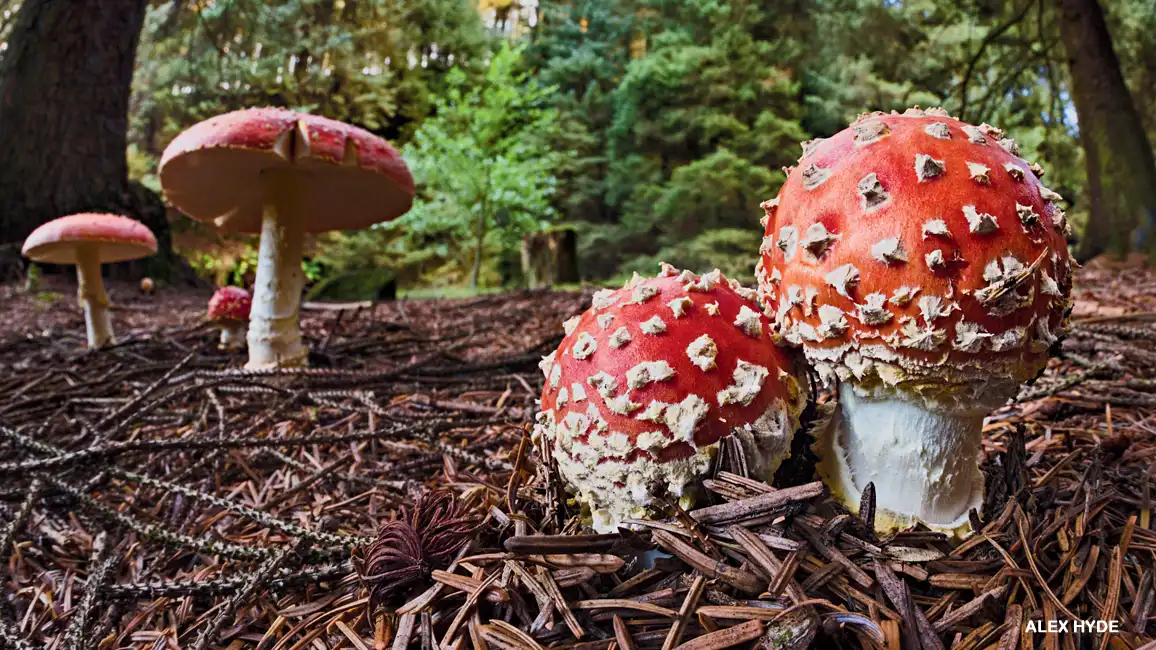
Mushrooms: Fungus Among Us
By Ellen LambethWhat are these crazy, creepy, curious things?

They’re neither animals nor plants. They’re in a group of living things called fungi (FUN-jeye). You can also pronounce that as “fun guy” or “fun gee.” No matter how you say their name, fungi are fun to discover. And if you’re talking about only one of them, you would call it a fungus.
You’ll recognize many fungi as mushrooms—those that grow stalks with caps. Check out these colorful amanitas, for example. You can look, but you’d better not touch—or taste. That’s because, like many mushrooms, they’re poisonous! A relative of this amanita even goes by the name “death cap.”
Now take a look at some fungi that aren’t mushrooms. These look more like…body parts? Happy Halloween!
YIKES!
Is someone trying to dig his way out of the ground? That’s what you might think if you came across the fungus called dead man’s fingers.
KNOW-IT-ALL
This isn’t called yellow brain fungus for nothing! It also goes by golden jelly fungus and witch’s butter.
SHHH. . .
A tree could be listening to you. At least, it looks that way, with this ear fungus growing from the tree’s bark.

NATURAL LOOKALIKES
Fungi that look like human body parts are weird. Fungi that look like other things in nature are weird, too-but less creepy. Check out some of their clever costumes.
ROAR!
This may look like a frozen waterfall, but it’s actually a lion’s mane fungus. So, where’s the rest of the lion?
GOBBLE, GOBBLE
What comes after Halloween? Thanksgiving, of course—as this turkey tail fungus will remind you. This and other fungi that grow as little shelves on the sides of trees are called bracket fungi.
HEADGEAR?
Are tiny deer growing out of the ground? It’s easy to see why this is often called carbon antlers or stag’s horn fungus. Candlestick fungus is another name for it.
UNDERSEA GARDEN?
Imagine coming across these sea anemone fungi—also called starfish fungi—or a clump of coral fungus (small photo). You might think you were in the ocean instead of a forest!
EGGS IN A NEST
This is a bird’s nest fungus. The “eggs” are actually packets of spores that bounce out when raindrops hit them. Find out more about spores after you turn the page.

MAKING MORE
Growing up a fungus is similar to growing up a plant. There’s a root-like thing called a mycelium (mye-SEE-lee-um). And there are seed-like things called spores.
As with plant seeds, spores may hitch rides to new places in wind or rain, or get carried elsewhere by animals. Wherever a spore lands, a new fungus may start to grow. Eventually, it forms fruit-like growths that produce more spores.
FUNGUS BODY
This mycelium is the main part of a fungus. You don’t usually see it because it grows underground, under leaves, or inside rotting wood or animals. The mycelium “feeds” on dead stuff while turning it into rich soil.
GLOWING GILLS
When a mushroom ripens, gills under its cap open up to drop spores. But why do some fungi glow in the dark? Scientists think that the light might attract insects and other “night crawlers.” Some of the spores might stick to them and then fall off later in new places.
STINKY FUNGUS
Like this stinkhorn, some fungi look and smell gross. The stinky, slimy goop at their tips is full of spores. The goop attracts flies and other insects. As the insects nibble, spores stick to their feet and get transported to other places where they can grow into new stinkhorns.
FAIRY RING
The middle of an underground mycelium may die, while its living edges keep spreading and sprouting mushrooms. The result is an above-ground ring of mushrooms that grows bigger and bigger over the years.
PUFF—POOF!
When some mushrooms—called puffballs—ripen, they shoot out cloud-like bursts of tiny spores. It doesn’t take much to trigger the explosion: maybe a falling leaf, some raindrops, or a scurrying squirrel.
ANIMALS & ‘SHROOMS
Have you ever eaten mushrooms with a meal? Many animals also chow down on fungi—or use them in other ways. And as you’ve seen, many fungi take advantage of
animals, too!
NOM, NOM
A buck takes a break in the woods to snack on a mushroom.
OWL LEDGE
A bracket fungus makes a perfect place to perch.
ZOMBIE FUNGUS
Believe it or not, a fungus entered the body of this ant. It took over its brain, causing the ant to crawl up a stem and then die. Later, the fungus will drop spores from the tops of those stalks to “infect” other ants below. Creepy!



